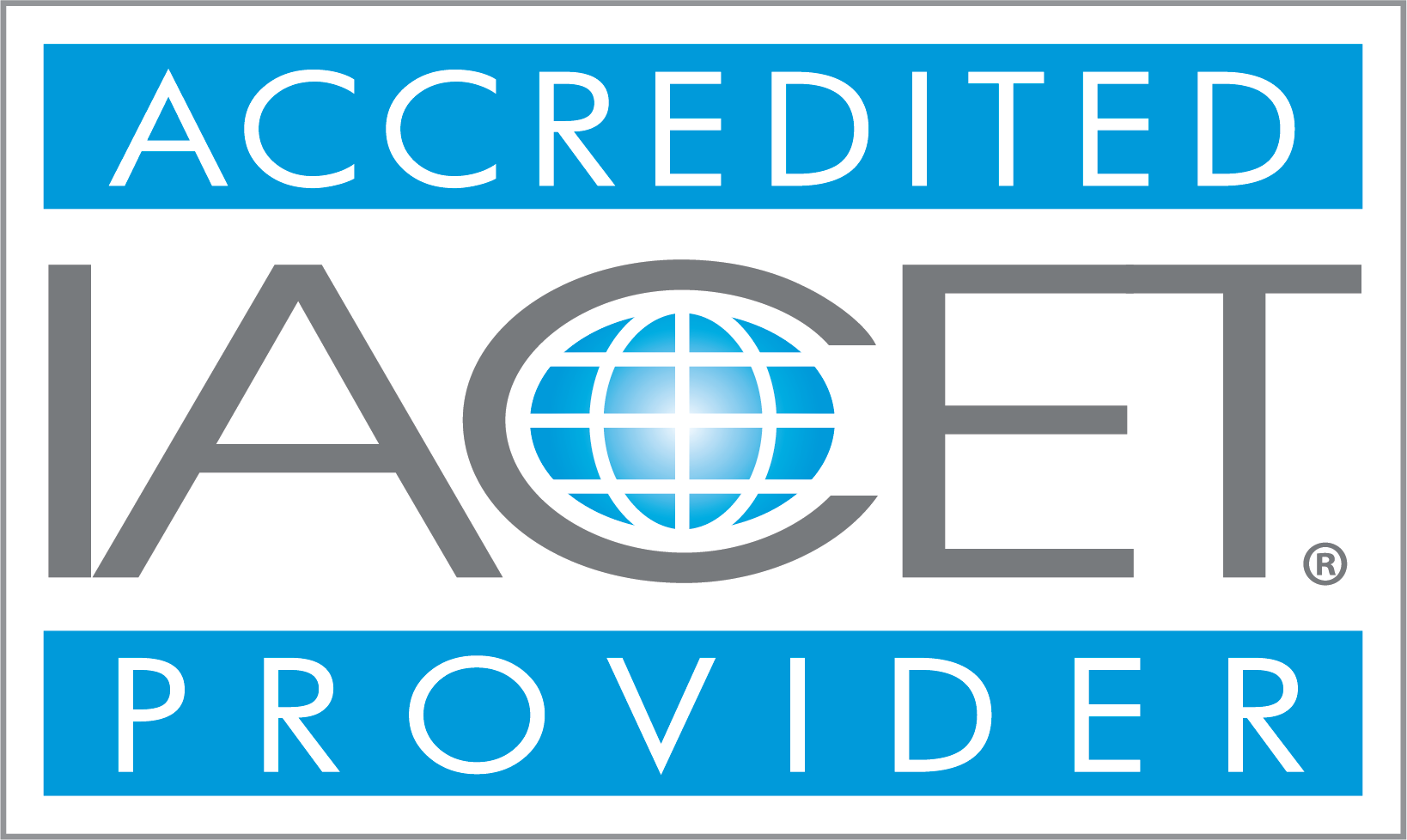
The Prior Authorization Certified Specialist (PACS®) Program
44%
improvement in prior auth approvals
2.9
days reduced from the time between the first prior authorization request and approval
60%
reduction in the amount of time spent supporting each single prior authorization request submission
55%
improvement in Prior Auth submissions
PACS® professionals from over 250+ companies
The Prior Authorization Certified Specialist (PACS®) Program
The Prior Authorization Certified Specialist (PACS) program is the only program focused on the information necessary to be a successful access and reimbursement professional.
Format
100% online and self-paced for your convenience
Exam required
Yes, 4 attempts provided (online)
Time to complete
6 months (average completion time is 10-12 hours)
Support provided
24/7 live human chat avaliable
PACS® - Transforming patient access, prior authorization & reimbursement
The authority on prior authorization
What you need to know about PACS
It's the only accredited certification program for prior authorization, reimbursement, market access and payer policies recognized in the industry. Watch a 1 minute video explainer about PACS
Created for prior authorization specialists by prior authorization specialists with experience in PBMs, payers, pharma, and healthcare.
ACMA established the industry standard with the PACS certification - ensuring core competency for authorizers.
Take the first steps towards achieving the gold standard in the healthcare and life sciences industry.
Be more than an authorizer
The Prior Authorization Certified Specialist (PACS) professionals are expanding patient access, advocating for better patient outcomes, and leading the reimbursement and access industry.
Establish yourself as an expert in prior authorization
Increase your effectiveness while making a difference
Demonstrate mastery of the prior authorization and payer landscape of the healthcare system
The path to becoming an exceptional reimbursement and access professional starts with PACS.
Why should I become a Prior Authorization Certified Specialist?
Credibility
Earn the recognition of achieving the standard of excellence among reimbursement professionals
Expertise
Prior Authorization Cerified Specialist professionals are leaders and subject matter experts among their reimbursement peers
Dedication
Prior Authorization Certified Specialists demonstrate a commitment to patient access and better outcomes
Higher pay
Certified professionals earn higher pay compared to other professionals in the field
The PACS® program is accredited by the International Accreditors for Continuing Education and Training/American National Standards Institute (IACET/ANSI)





95% rate PACS good to excellent
PACS® payment options
PACS certification demonstrates your mastery of the highest standard of knowledge through experience, rigorous study, and evaluation
Full Payment
Prior Authorization Basic Training Program (PABT)
$1,079.99
for prior auth beginners
6 month access (online)
12 learning modules
12 pre & post knowledge checks
Resources & case studies
Final exam (4 attempts)
PACS credentials
Full Payment
The Prior Authorization Certified Specialist (PACS®) Program
$1,499.00
for Reimbursement, MD, PharmD, & PhD Professionals
6 month access (online)
12 learning modules
12 pre & post knowledge checks
Resources & case studies
Final exam (4 attempts)
PACS® credentials
3 Month Installments
The Prior Authorization Certified Specialist (PACS®) Program
$524.65 / 3 monthly
for Reimbursement, MD, PharmD, & PhD Professionals
6 month access (online)
12 learning modules
12 pre & post knowledge checks
Resources & case studies
Final exam (4 attempts)
PACS® credentials
The PACS program truly opened more remote prior authorization opportunities for me, allowing me to expand my career in ways I hadn't imagined. The contents I learned in the PACS program truly set the foundation and helped me be a step ahead in my current prior authorization role. Thank you for the certification which has led to a strong career where I can work from home while making a decent living. Thank you!

Andrine Toussaint, LPN, PACS
Licensed Practical Nurse
I found the information informative. I knew some of it from doing prior authorizations already but I also learned a lot about different insurance companies and services rather than just medications. I got through it pretty quickly. I liked how the test was laid out with different sections and was easy to follow. The information was easy to understand and follow. I like the links that were throughout the slides for more information. The exam itself was over the material read, no trick questions or hidden information. Overall, I would recommend the course.

Taylor Nease
Prior Authorization Specialist
I really enjoyed the program as it was pertinent to my current role as a Field Reimbursement Manager at GSK. I heard about the PACS program from our leadership who supported us in obtaining this certification. Overall, it was a great learning experience and well worth the investment!

Jay Harding, PACS
Sr. Director, Market Access
I think the program was great. Having done this program, I'm trying to make myself more valuable. I want to stand out as someone who's done the program but also for people to reach out to me and ask for help. For me, being a PACS takes my credibility up a couple of notches

Jeni Nelson PACS
Territory Manager
The PACS program was both comprehensive and insightful. The modules were broken down into appropriate segments and together they gave a wonderful view of the entire prior authorization landscape. It was extremely easy to navigate and user-friendly even down to the very responsive chat function!
%2BHawthorne%252C%2BPACS.webp&w=128&q=75)
Kristen Hawthorne
Access and Reimbursement Manager
Great certification program for the field reimbursement/patient access role. This is beneficial to people in the profession. This gives them an in-depth overview of the operations surrounding reimbursement.

Dorette Shirley
Field Reimbursement Manager
I had a great experience! In terms of the program and design, the content is great. I am already seeing benefits in my role. There are things that I learned in the PACS program that I m using in my conversations with the physicians and nurses. There is tremendous value in the PACS program!

Anil Bulchandani MBA, LSSBB, PACS
Field Reimbursement Director
It was a great course. I learned so much!!! Definitely met the needs of my role as a field reimbursement manager. I was excited to learn more about how I could be a better asset and resource to my offices.

Lynn Liberati PACS
Field Reimbursement Manager
Prior authorizations are not a multiple choice test that if you put in enough right answers you ll pass and get an approval. The PACS course explained not just the why of the process, but the importance of all the pieces that make up the why. I would recommend this course to anyone involved with the authorization process to better grasp the steps and refresh their skills. I thought I was pretty savvy when it came to prior authorizations but this certification allowed me to further demonstrate my knowledge and skill set.

Elizabeth Johnson LPN, CPC, PACS
Patient & Healthcare Advocate
The PACS Program is designed very well. It helped me sharpen my skills in this area. Overall great course and great learning experiences. There are so many topics that helped me clear my concepts and I will definitely implement that during my routine job.

Jayshree Patil
Coordinator, Prior Authorization
I was able to do it as well! It was a very helpful overview. The course allowed me to sharpen my skills and learn new information about areas that are outside of my current responsibilities. I am hoping the certification translates into a bit of an advantage as I continue to interview for market access positions in this highly competitive job market! I also am incredibly grateful for the scholarship provided, I couldn't have signed on without it, so thank you again!

Lori Cecutti MBA, PACS
Field Market Access Director
The PACS course is comprehensive and a well structured training program that reflects real life experiences in the field.

JT Hostler PACS
Director of Market Access
Great certification program for the field reimbursement/patient access role. This is beneficial to people in the profession. This gives them an in-depth overview of the operations surrounding reimbursement.

Dorette Shirley
Field Reimbursement Manager
Prior authorizations are not a multiple choice test that if you put in enough right answers you ll pass and get an approval. The PACS course explained not just the why of the process, but the importance of all the pieces that make up the why. I would recommend this course to anyone involved with the authorization process to better grasp the steps and refresh their skills. I thought I was pretty savvy when it came to prior authorizations but this certification allowed me to further demonstrate my knowledge and skill set.

Elizabeth Johnson LPN, CPC, PACS
Patient & Healthcare Advocate
I had a great experience! In terms of the program and design, the content is great. I am already seeing benefits in my role. There are things that I learned in the PACS program that I m using in my conversations with the physicians and nurses. There is tremendous value in the PACS program!

Anil Bulchandani MBA, LSSBB, PACS
Field Reimbursement Director
What will I learn in the PACS® program?
The prior authorization process
Insurance policies and pricing
Compliance - HIPAA, security, fraud and abuse
Medical records and the prescription
Fundamentals before the authorization process
Communication methods
Service line and medication process and submission
Special considerations for service orders
Out of network waivers
Coverage determination types in medication
Denials and appeals
The future of prior authorizations
Why certify with ACMA?
Experienced
10+ years of experience and proven track record in the life sciences industry
Robust learning management system
Robust training platform features with on-demand, immersive, and cohort-based learning
Personalized training
Personalized learning and actionable learner insights
Engaging content
Engaging content using research-driven pedagogical techniques
Secure
Secure and reliable next-gen technology
Support
24/7 live human chat avaliable
Explore how PACS® was crafted to transform the industry
Advisory board
Several advisory board meetings held with leaders and subject matter experts.
Accreditation
ACMA received IACET accreditation, whose processes helped us build a rigorous curriculum.
Development
Prior Authorization Certified Specialist program designers developed content using psychometric analysis to ensure that graduates are held to the highest standards of learning and assessment.
Industry standard
Prior Authorization Certified Specialist program established standards for knowledge, technical skills and professional practice for those working within the payer landscape.
Expert insights
ACMA works with experts from PBMs, payers, pharma, and healthcare to develop the newest and best content for the prior authorization certified specialist curriculum.
Updated content
Content is always updated to reflect new business practices, technologies, market challenges and regulatory changes.
Frequently asked questions (FAQs)
Is the Prior Authorization Certified Specialist program a certificate or a certification?
Who developed the Prior Authorization Certified Specialist program content?
Do I need to maintain my certification?
How long does the program take to complete?
Do you offer payment options/plans?
How do I enroll?
Documentation & policies

Become excellent in prior authorization, reimbursement & market access: Become a prior authorization certified specialist
PACS Links
What is PACS?
PACS reviews
Why certify?
PACS price
PACS recertification
PACS extension
PACS FAQs
Quick contact
info@acmainfo.org












